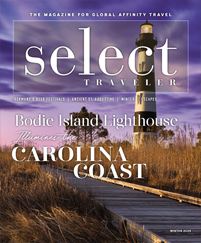Schnebly Redland’s Winery and Brewery
Homestead, Florida
Peter Schnebly, co-owner of Schnebly Redland’s Winery and Brewery, came to the wine business in a roundabout manner. Having grown up in upstate New York surrounded by wineries, he first gravitated toward the distribution of table grapes, not wine grapes, and then moved to south Florida to start a produce company focused on importing and exporting exotic fruits.
“He saw a lot of fruit going to waste because it was overripe or was B-[grade] or C-grade fruit,” said Julio Amado, marketing and media coordinator for Schnebly. “By the time it got to Winn-Dixie or Wal-Mart, it would have been unsellable. He had a friend who mentioned that wine could be made from lychees, which was one of the fruits he had; Doug Knapp from Knapp Winery helped him out with a couple recipes, and now we have 18 varieties.”
While Schnebly Redland’s may not have been the first winery in south Florida, it is the most unusual in the region, the state and maybe even the nation. Today, Schnebly’s wines include tropical fruit blends along with single fruit lines like avocado, mango, guava, star fruit, coconut, passion fruit and the original lychee, reminiscent of riesling. “We use only what is possible to be grown in Florida,” said Amado. “We don’t grow all the fruits for our wine anymore, but we buy everything local.”
Groups can easily spend anywhere from an hour to four hours at Schnebly taking in a tour of the production facility, which is typically closed to the public. The experience includes wine and beer tastings, and lunch is available at the on-site Redlander Restaurant or, privately, at the Waterfall Tiki, a 60-seat space between two waterfalls surrounded by koi ponds.
In 2011, Schnebly branched out into the beer business as well, opening Miami Brewing Company, the first commercial brewery in Miami-Dade County and an immediate hit with locals. At the new taproom, which opened last October, groups can taste beers featuring local produce, like the mainstay Big Rod Coconut Ale and seasonal products such as Mango Wheat Ale.
Bayou Rum
Lacassine, Louisiana
When the looming end of slavery was slowly killing the Caribbean sugarcane and rum industries in the late 18th century, Louisiana’s Mississippi shorelines benefited from the flood of escaped slaves and sugarcane farmers. But despite the continued prevalence of sugarcane farms today, there was no major Louisiana rum distillery until Bayou Rum started up its stills in 2013.
“It started with just an idea,” said president Trey Litel. “We talked for a while about why there was no world-class rum from Louisiana. With the craft distilling boom, it was the right time. We became the first ground-up distillery on record in Louisiana, though there was an older one in an old warehouse. It took a while to educate everyone and get the permits.”
Group tours begin with a short video on how the distillery got started before delving into an in-depth look at the distillery’s operations, from a visitor center showing the history of sugarcane in Louisiana and how it is harvested to where the raw materials are received to the molasses phase and through to the bottling room. Bayou Rum sources its sugarcane from 60 miles away at the largest working sugar mills in Louisiana, which have operated since 1825 and are still family owned. Group tastings can feature a specialty drink as well as straight rum and prepackaged gift bags, if the tour leader chooses.
In the few short years since it opened, Bayou Rum has garnered awards for its flagship spiced and silver rums from the American Distilling Institute, the International Rum Expert Panel, the World Beverage Competition and the International Spirits Competition, among others. The distillery also won this year’s Attraction of the Year Louey award from the Louisiana Travel Promotion Association.
www.bayourum.com
Biltmore Winery
Asheville, North Carolina
The Biltmore Estate, which welcomes more than 1 million visitors each year, is widely known as the largest private home in America, but few realize it’s also the site of America’s most visited winery, with six times the visitation of mega Napa, California, winery Robert Mondavi. Nearly half of the Biltmore Winery’s annual production is sold to on-site visitors, who often snap up hard-to-get bottles of its many single vineyard and reserve bottlings.
Though it is young as far as American wineries go, the Biltmore Winery was one of the first to open in North Carolina after Prohibition when it first laid down its vines in 1977. The winery uses its own grapes for about 20 percent of its production; it sources the rest from partnerships with growers in California to fill out its award-winning portfolio of more than 40 white, red, blush, dessert and sparkling wines.
The current winemaker, Bernard Delille, has been with the winery for 20 years and is extremely passionate — positively about his grapes but less so about the local weather. “A lot of the estate was overworked farmland when they got it, not the ideal soil for grapes,” he said. “The climate is more of an issue. Cabernet franc is best to grow here, but it’s hard to market. It has strong fruits and a very heavy mouth.”
Winery tours and tastings are complimentary with estate admission, but groups can choose to add on a premium tasting of reserve wines, a sparkling selection with petit fours or red wines paired with chocolate for a more exclusive experience.









